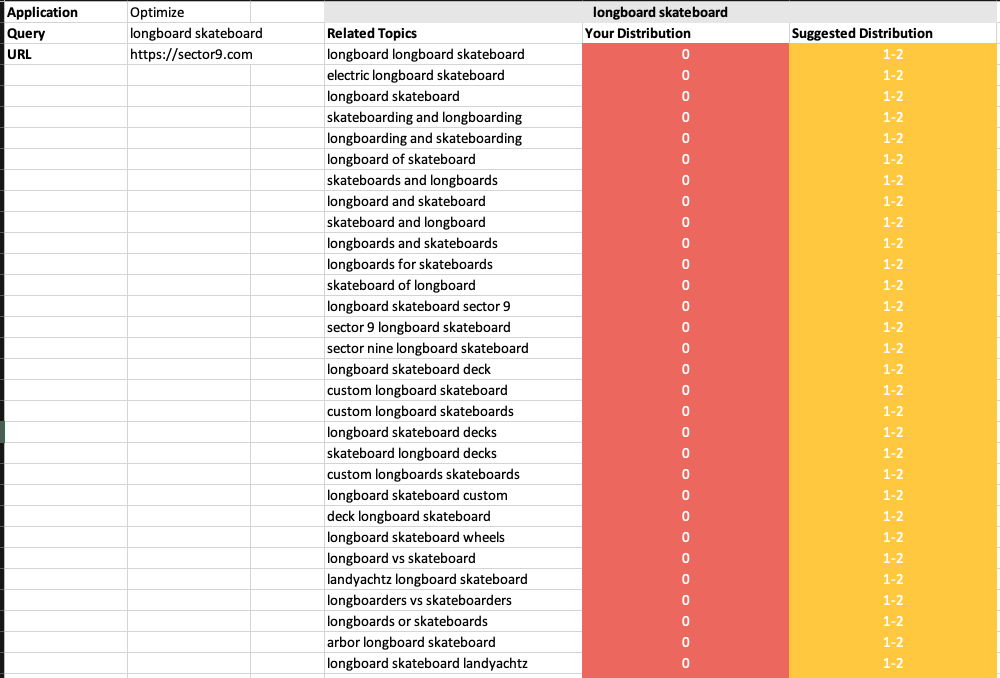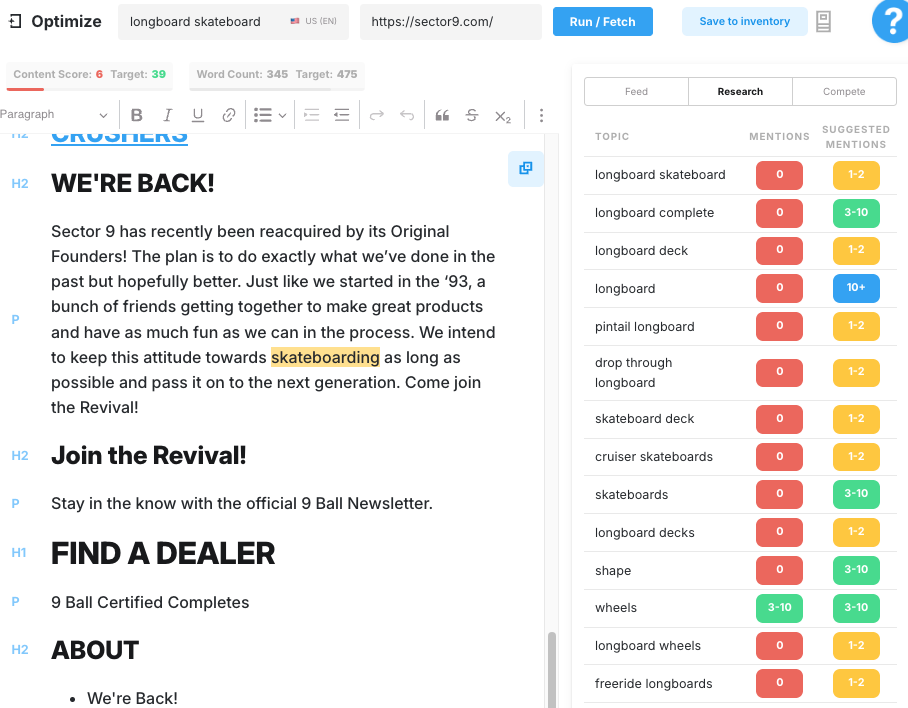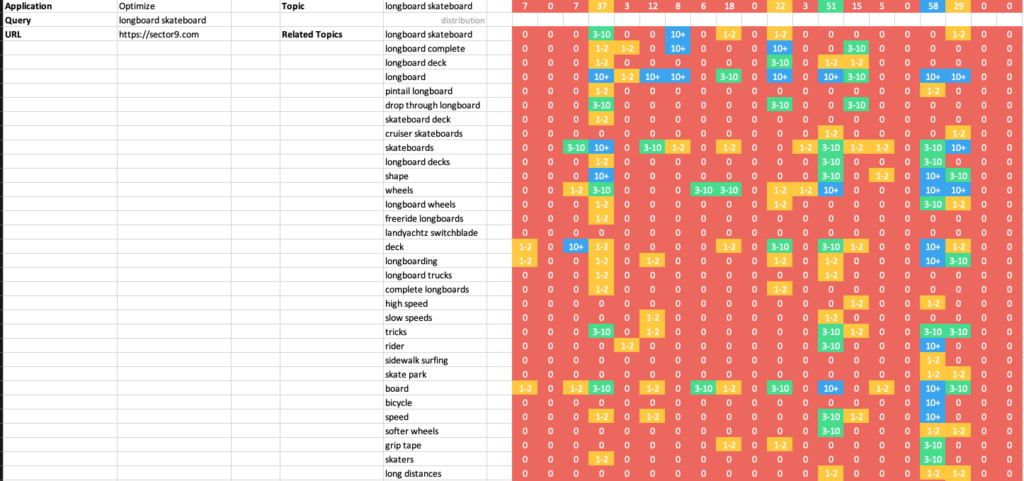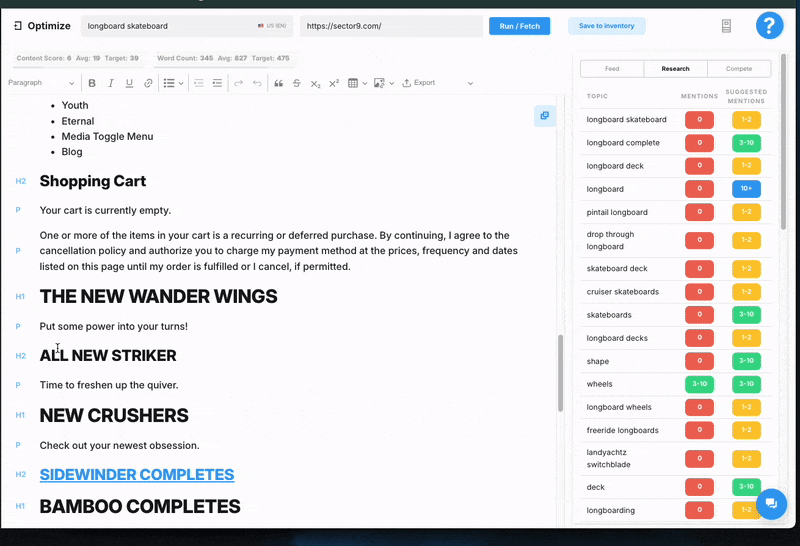Introduction
SEO is ever evolving, and in this fast-paced digital landscape, the key to staying ahead lies in embracing AI-driven strategies. A pivotal shift occurred with Google’s RankBrain algorithm update, which introduced machine learning to refine search rankings. Rather than relying solely on traditional keyword matching, RankBrain focuses on user intent and contextual relevance. This change revolutionized how we think about SEO and content optimization.
Topic modeling in SEO is the practice of using machine learning to identify the key themes, subtopics, and related entities within your content—so it aligns with how search engines understand meaning, context, and user intent. It goes beyond keyword matching and focuses on covering the full scope of a topic in a way that resonates with both algorithms and humans.
As search engines continue to prioritize relevant content over simple keyword matches, content marketing has had to evolve. Now, LLMs (Large Language Models) and topic modeling are essential tools in optimizing content for today’s search engine results. In this post, we’ll break down how these technologies work, how they’re shaping Google Search, and why you need them to optimize content effectively. Once you’ve completed keyword research and mapping, the next step is optimizing your content to align with those targeted terms. Incorporating LLM-driven SEO tools into your workflow is a game-changer—providing smarter, faster optimization that keeps you ahead of the curve.
1. Understanding LLMs & Topic Modeling
What Are LLMs?
Large Language Models (LLMs), like GPT-4 and Google, are advanced AI algorithms that understand and generate human-like text. These models are trained on vast amounts of data, allowing them to grasp context, meaning, and nuances in language. In terms of content marketing, LLMs can assist with everything from content ideation to relevant keyword generation, helping you create pieces that truly resonate with your audience.
What Is Topic Modeling?
Topic modeling is the process of grouping related words and concepts within a piece of content, making it easier for search engines to understand the broader context of your work. AI helps identify semantic clusters of topics that matter most to your audience. Here’s how topic modeling works in a nutshell:
- Latent Semantic Analysis (LSA): Analyzes word relationships and patterns within a text.
- Latent Dirichlet Allocation (LDA): Identifies dominant topics in your content.
- Neural Topic Modeling: Deep learning that goes further in analyzing complex structures within text.
These approaches allow content to be viewed more holistically, focusing on relevant content and context instead of just individual keywords.
2. Google’s RankBrain: The Catalyst for AI-Driven SEO
Google’s RankBrain update was a game changer. Introduced in 2015, it was the first AI-powered algorithm in the search giant’s arsenal, and it fundamentally altered how search results are ranked. RankBrain focused on understanding user intent, not just matching relevant keywords. It made rankings more dependent on topic relevance and how well content satisfied search queries.
This change signaled the end of keyword stuffing and the beginning of a new SEO era—one where content needs to be comprehensive, relevant, and answer the user’s true needs. RankBrain paved the way for further AI-driven updates, like BERT and MUM, which continue to improve search engines’ ability to understand complex queries.
3. Ensure Topical Depth & Comprehensiveness with MarketMuse Optimize
Using LLMs for Content Research & Ideation
In today’s search-driven world, content marketing requires more than just targeting the right keywords. Google Search is increasingly prioritizing content that demonstrates topical depth, expertise, and relevance. Thin, low-quality content is quickly spotted by both search engines and readers, negatively impacting rankings and user trust.
To truly stand out in today’s search-driven world, it’s all about creating quality content that speaks to both your audience and the search engines. Forget keyword stuffing—it’s no longer the strategy that works. Instead, focus on providing valuable content that answers your audience’s needs in a meaningful way. This is where a thoughtful content strategy comes in, one that balances SEO best practices with engaging, high-quality content. When you prioritize depth and relevance, you not only improve your chances of ranking higher, but you also increase the likelihood of landing featured snippets, which can drive more traffic and boost your brand’s authority.
Using tools like MarketMuse’s Optimize addresses these challenges by helping you evaluate your content’s topical depth and ensuring that no critical aspect of your topic is left uncovered. Whether you’re writing new content or revisiting existing content, optimizing it for completeness and quality is essential.
What is Topical Depth?
In the past, ranking well on Google was often about incorporating enough of the right keywords into your content. But with updates like Google’s RankBrain and BERT, search engines now prioritize content that is not only keyword-rich but also comprehensive and contextually relevant to a user’s intent.
MarketMuse Optimize evaluates your content against a broad set of related topics and ensures you’ve covered all necessary aspects of your target subject. Here’s how it works:
- Topical modeling: MarketMuse analyzes the most important subtopics related to your main keyword, ensuring you cover every angle of the topic.
- Data-driven recommendations: You’ll receive suggestions for additional topics to cover, ensuring your content is thorough and doesn’t leave gaps.
- Topic relevance: Ensure your content ranks for more relevant keywords and aligns with search intent by covering related subtopics that others might miss.

Why Use MarketMuse for Content Optimization?
MarketMuse is an AI-driven content optimization tool that uses topic modeling to create optimized content that meets Google’s ever-evolving expectations.With its AI-powered content briefs, you can easily structure your writing to match search intent, leading to more engaging, valuable content.
MarketMuse scrapes the top 20 results in Google and compares the competitor’s topic modeling to yours and shows you where you are missing the mark. This tool is a tool for writers and SEO professionals as it helps you write explicitly for your target audience. Using this tool will help you gauge if your content is considered “high quality” content in the eyes of Google, and also your audience because you are comparing the optimized content to other webpages that are winning with users.

4. Optimize Your Content for E-E-A-T
Google’s algorithms are now looking more closely at E-E-A-T (Experience, Expertise, Authority, Trustworthiness), and so should you. MarketMuse Optimize helps ensure your content demonstrates these critical factors, making it more likely to rank well.
Here’s how to use Optimize to strengthen your content’s E-E-A-T:
- Content scoring: MarketMuse provides a content score, giving you a clear metric to measure how well your content demonstrates expertise and covers important topics.
- Personalized suggestions: Use AI-driven advice to enhance your content, adding depth, improving structure, and ensuring it reflects your brand’s authority on the subject.
- Search intent alignment: Ensure your content isn’t just high-quality but also answers the user’s query in a way that demonstrates experience and trustworthiness.
This approach helps your content pass the critical E-E-A-T test, ensuring it resonates with both users and search engines alike.
5. Identify Gaps in Your Existing Content
Make Your Existing Content Work Harder
A common mistake many content teams make is publishing content and moving on quickly, without revisiting older posts. MarketMuse Optimize helps you get more mileage out of existing content by identifying gaps or areas for improvement, even in your best-performing articles.
Here’s how Optimize helps refine older content:
- Content review: Analyze your current content to spot gaps in coverage. MarketMuse identifies areas where your content can be expanded or enhanced.
- Targeting missed opportunities: Get AI-driven recommendations to improve or expand your content based on what competitors are ranking for.
- Improvement metrics: Track how much you improve your content’s quality and relevance over time with MarketMuse’s content score.
By revisiting and optimizing existing content, you ensure it remains relevant and continues to perform well in search.
6. Comparing Your Content Against Competitors
Gain the Competitive Edge
To truly understand how your content stacks up, you need to analyze how it compares to the top-ranking pages for your target keywords. MarketMuse Optimize provides a 1-1 comparison of your page against the top 20 competitors, helping you spot gaps in their coverage and leverage them to your advantage.
Here’s how this feature works:
- Competitor analysis: See how your content compares to high-ranking pages by analyzing their content structure, topical depth, and keyword usage.
- Spotting missing topics: MarketMuse highlights what’s missing in your content versus competitors’ pages, allowing you to cover must-have subtopics that can elevate your content.
- Exploitation of content gaps: Take advantage of opportunities where competitors may have missed important angles, ensuring your piece is the most comprehensive on the topic.
By using these competitive insights, you can ensure your content not only competes but stands out by addressing missing topics and offering deeper insights than your competitors.

Conclusion
As the digital world continues to evolve, AI-driven content optimization is no longer optional—it’s a necessity. Google’s RankBrain update was the catalyst for a new SEO landscape, and tools like MarketMuse, SurferSEO, and Clearscope are essential in optimizing relevant content for today’s search engines. By embracing LLMs and topic modeling, you can create high-quality, optimized content that not only ranks but resonates with your audience.
Ready to optimize your content the right way? Reach out to BOHO SEO for expert-led, AI-powered content strategies that will elevate your brand’s digital presence.


